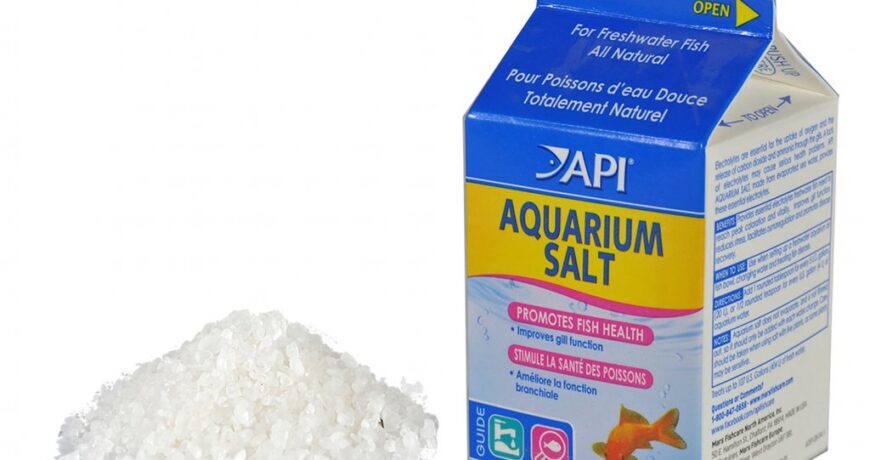Have You Ever Salted Your Freshwater Aquarium?
It’s a measure you should consider if you like your fish to be healthy. If fish could toast their keepers for any good deed, they would raise a fin to you when adding sodium chloride to their water.
Aquarium salt is what we’re talking about. It does not contain iodine like ordinary table salt. It does not contain trace minerals like that of sea salt.
Using aquarium salt in your freshwater tank can have a number of positive influences. At best, it is an inexpensive health care preventative, and one that does not harm the beneficial bacteria bed in your tank.
Adding Aquarium Salt Can:
- Aid in the treatment or control many parasitic populations (including Ich) when added to the aquarium if used properly.
- Enhance your fish’s ability to produce a protective slime coat. This is especially helpful if your fish are recovering from a bacterial infection or an injury, such as a torn fin.
- Prevent intake of lethal nitrites during the nitrogen cycle when starting a new tank.
- Prevent intake of stressful high nitrates in existing aquariums.
- Lessen stress by aiding gill function. Fish kidneys are designed to excrete the water absorbed through the fish’s skin and gills. This is a big job and a constant one necessary for your fish’s survival. By adding aquarium salt to the water, the fish’s kidneys do less work, because the amount of water absorbed into the blood by way of gills is reduced.
When and How To Add Salt
It is not necessary to add aquarium salt all the time, but it is most beneficial when used in combination with other medications. Aquarium salt should always be pre-dissolved in water before adding to the aquarium. The concentration of aquarium salt used is based on intent.
As a general rule, start with one tablespoon of salt for 5 gallons of aquarium water. This is a safe dosage for all fish and plants. Observe the aquarium for 24 hours. If there is no improvement, the salt dosage can be repeated for up to four days. On the fifth day, perform a 25% water exchange. Repeat the water exchange once a week for four weeks.
Products like Nutrafin® Freshwater Aquarium Salt give usage instructions on their aquarium salt packages. Some hobbyists use aquarium salt only as a general tonic or preventative. Others use it in higher concentrations to treat for existing parasites. It can even be used to hatch brine shrimp eggs.
Use with Care with Plants, Bottom-Feeders
Although the benefits of aquarium salt are many, there are a few drawbacks that freshwater hobbyists need to consider before adding it to their tanks. Live plants can be killed by treatment concentrations of sea salt. Spawning, as well, can be affected by addition of salt because it can dehydrate eggs and kills sperm emitted by male species. Some fish, especially scaleless bottom feeders like Chinese algae eaters and Corydoras catfish, are sensitive to aquarium salt and may die if concentrations are too high.
Add At Intervals
Bottom-feeding fish may adjust to low concentration of salt in their water if the desired concentration of salt is added over several days. Therefore, hobbyists should avoid dumping all the salt into the tank at one time if delicate species are in the tank.
Don’t Experiment with Salt
One final warning, many people think salt is salt. It isn’t. It comes in many forms. Iodized table salt, if added to an aquarium, has been known to cause ammonia levels to rise and then nitrites. It could severely upset an established aquarium’s biological filtration bed.
Sea salt is more expensive. The trace minerals in it probably won’t hurt your fish nor will they benefit your finned-freshwater friends

